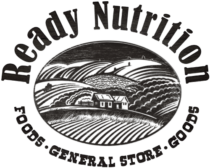As the most recent death toll from the Haitian earthquake has hit a death toll of 1,297 many are reminded of the destructive aftermath of the 2010 Haitian earthquake that caused vast destruction and a rampant epidemic. This chaotic event can be detrimental to society in many different ways.
As preppers are well aware, when the needs of the population cannot be met in an allotted time frame, a phenomenon occurs, and the mindset shifts in people. Many people will begin to act without thinking and respond to changes in their environment in an emotionally based manner, thus leading to chaos, instability, and a breakdown in the social paradigm.
“Complicating rescue efforts was the fact that the only road linking Haiti’s capital with the three worst-hit departments – Grand’Anse, Nippes, and Sud – has become virtually unpassable in recent months because of a deadly struggle between police and heavily armed criminal gangs. “It has been a war zone for a long time. Fuel cannot get through. Supplies cannot get through. Ambulances cannot get through,” said Jean William Pape, a prominent Haitian doctor who, because of the gangland conflict, was using helicopters and small planes to ferry supplies to hospitals in Jérémie and Les Cayes.
Milord, Jérémie’s mayor, said he feared that the arrival of tropical storm Grace, which is due to hit Haiti on Monday or Tuesday, would further complicate relief efforts. “I really don’t know what might happen,” he said, according to The Guardian, remembering how he had seen bodies strewn on the streets of his city after the quake struck at about 8.30 am on Saturday.”
Think it won’t or can’t happen in the U.S.? Think Again!
Not too long ago, the United States experienced a toilet paper shortage after panic buying ensued when the government declared the coronavirus a pandemic. That was only a year and a half ago and fresh in many minds.
Such devastation like earthquakes can also cause food or water shortages, which would be far more terrifying to most than not being able to buy toilet paper. As of right now, grocery stores all over the country are also preparing for food shortages by stockpiling food now before the inflation and shortages hit the hardest.
Related: If The Grocery Stores Are Stockpiling Food, Shouldn’t You?
But the U.S. is also experiencing long 9-1-1 wait times and ambulance shortages thanks to COVID. This would turn a natural disaster into a chaotic catastrophe. In fact, recent statistics on the shortages of ambulances in some cities in the United States say maybe not…especially during a disaster.
The Journal of Emergency Medical Services stated that rural EMS departments are facing the biggest challenges. On-the-job stress is not unusual for EMS workers and combined with long hours, low pay, and an increase in ambulance calls, this is causing their ranks to thin as co-workers burn out and quit as they snag higher-paying and lower stress jobs with better hours. The emergency worker shortage, seen nationwide, could endanger patients’ lives through increased response times, and a disaster could mean many go without the vital medical care they will need to save their lives. Read more here.
And what about the delay in deliveries, or if trucks just stop delivering products? Simply put, if there are no deliveries, there is no fuel and no food.
What You Can Do
1.Get and stay prepped. Getting prepared for short-term and longer-term disasters will help insulate you from emergencies when they occur. Use our week-by-week preparedness guide to get you prepped for any disaster that comes your way.
2. Grow your own garden. Ultimately, you should find a way to grow some of your food year-round. Whether it’s a small salad garden on the patio, or a robust garden full of all of your favorite vegetables. We recommend trying heirloom seed sources like those in the Homestead Vegetable Garden-In-A-Can or try your hand at starting a fruit orchard. For more information for the first-time garden, try reading this garden guide. Once you have your vegetable garden going, add some herbs. Not only can you can homemade medicines and teas, but you will attract beneficial pollinators. Moreover, get to know the local farmers in your area. Many of them sell their produce at farmer’s markets. Getting in contact with the ones in your area will help you create a surplus of food fast in an emergency.
3. Go local – Buying from locals not only supports those in your area, but you are also making connections and could even barter for goods.
4. Learn skills– The more skills you know, the less likely you are to depend on others to do things for you. This, in turn, saves you money and gives you skills you can use for bartering in emergencies.
5. Secure your medicines beforehand. Essential pharmaceutical companies may not be open. Do what you can to gather all prescription medicines ahead of time and stock up as you can. As well, when disasters are concerned, bruises and cuts may not be the only ailments you will be dealing with. There could be a host of medical concerns that could be both physical and mental. Consider preparing for these medical emergencies by gathering items needed and the proper gear to care for major injuries or health problems.
Keep the preparedness mindset at all times and do your best to beat the odds. All we can control is what we do to get ready for and our reactions to these situations.
